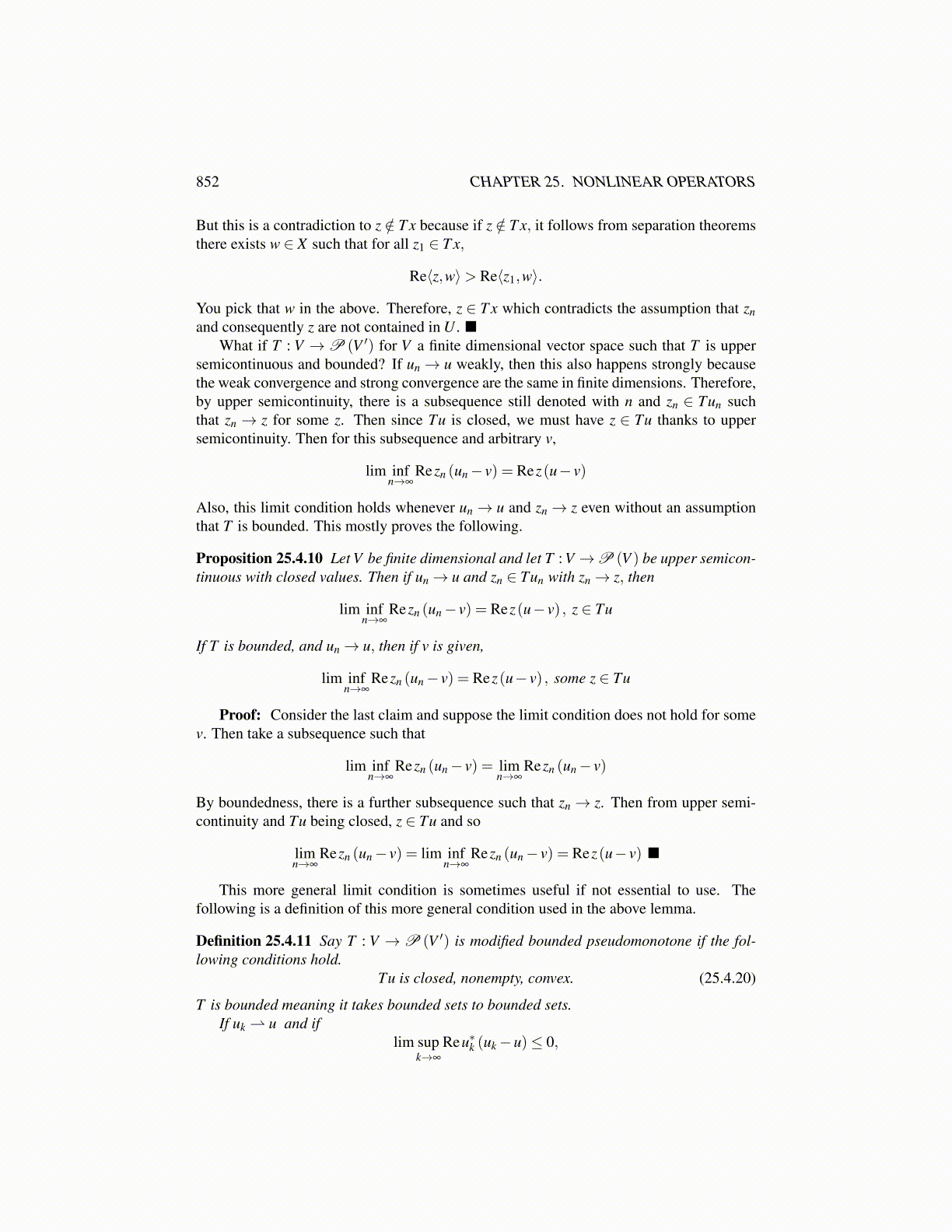
852 CHAPTER 25. NONLINEAR OPERATORS
But this is a contradiction to z /∈ T x because if z /∈ T x, it follows from separation theoremsthere exists w ∈ X such that for all z1 ∈ T x,
Re⟨z,w⟩> Re⟨z1,w⟩.
You pick that w in the above. Therefore, z ∈ T x which contradicts the assumption that znand consequently z are not contained in U .
What if T : V →P (V ′) for V a finite dimensional vector space such that T is uppersemicontinuous and bounded? If un→ u weakly, then this also happens strongly becausethe weak convergence and strong convergence are the same in finite dimensions. Therefore,by upper semicontinuity, there is a subsequence still denoted with n and zn ∈ Tun suchthat zn → z for some z. Then since Tu is closed, we must have z ∈ Tu thanks to uppersemicontinuity. Then for this subsequence and arbitrary v,
lim infn→∞
Rezn (un− v) = Rez(u− v)
Also, this limit condition holds whenever un→ u and zn→ z even without an assumptionthat T is bounded. This mostly proves the following.
Proposition 25.4.10 Let V be finite dimensional and let T : V →P (V ) be upper semicon-tinuous with closed values. Then if un→ u and zn ∈ Tun with zn→ z, then
lim infn→∞
Rezn (un− v) = Rez(u− v) , z ∈ Tu
If T is bounded, and un→ u, then if v is given,
lim infn→∞
Rezn (un− v) = Rez(u− v) , some z ∈ Tu
Proof: Consider the last claim and suppose the limit condition does not hold for somev. Then take a subsequence such that
lim infn→∞
Rezn (un− v) = limn→∞
Rezn (un− v)
By boundedness, there is a further subsequence such that zn→ z. Then from upper semi-continuity and Tu being closed, z ∈ Tu and so
limn→∞
Rezn (un− v) = lim infn→∞
Rezn (un− v) = Rez(u− v)
This more general limit condition is sometimes useful if not essential to use. Thefollowing is a definition of this more general condition used in the above lemma.
Definition 25.4.11 Say T : V →P (V ′) is modified bounded pseudomonotone if the fol-lowing conditions hold.
Tu is closed, nonempty, convex. (25.4.20)
T is bounded meaning it takes bounded sets to bounded sets.If uk ⇀ u and if
lim supk→∞
Reu∗k (uk−u)≤ 0,